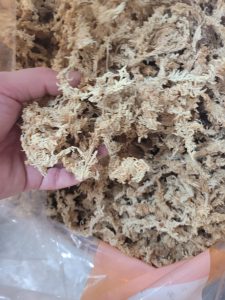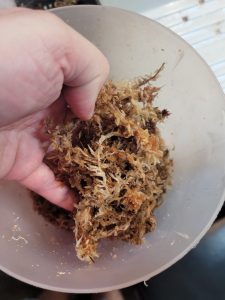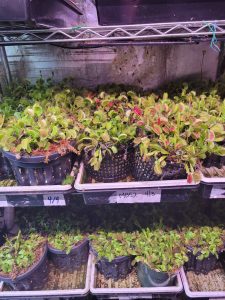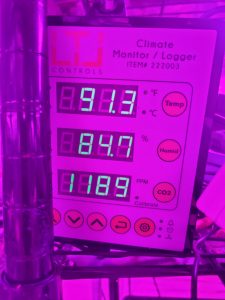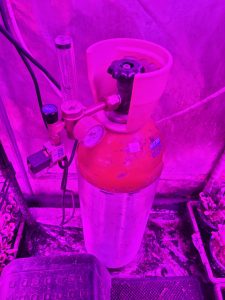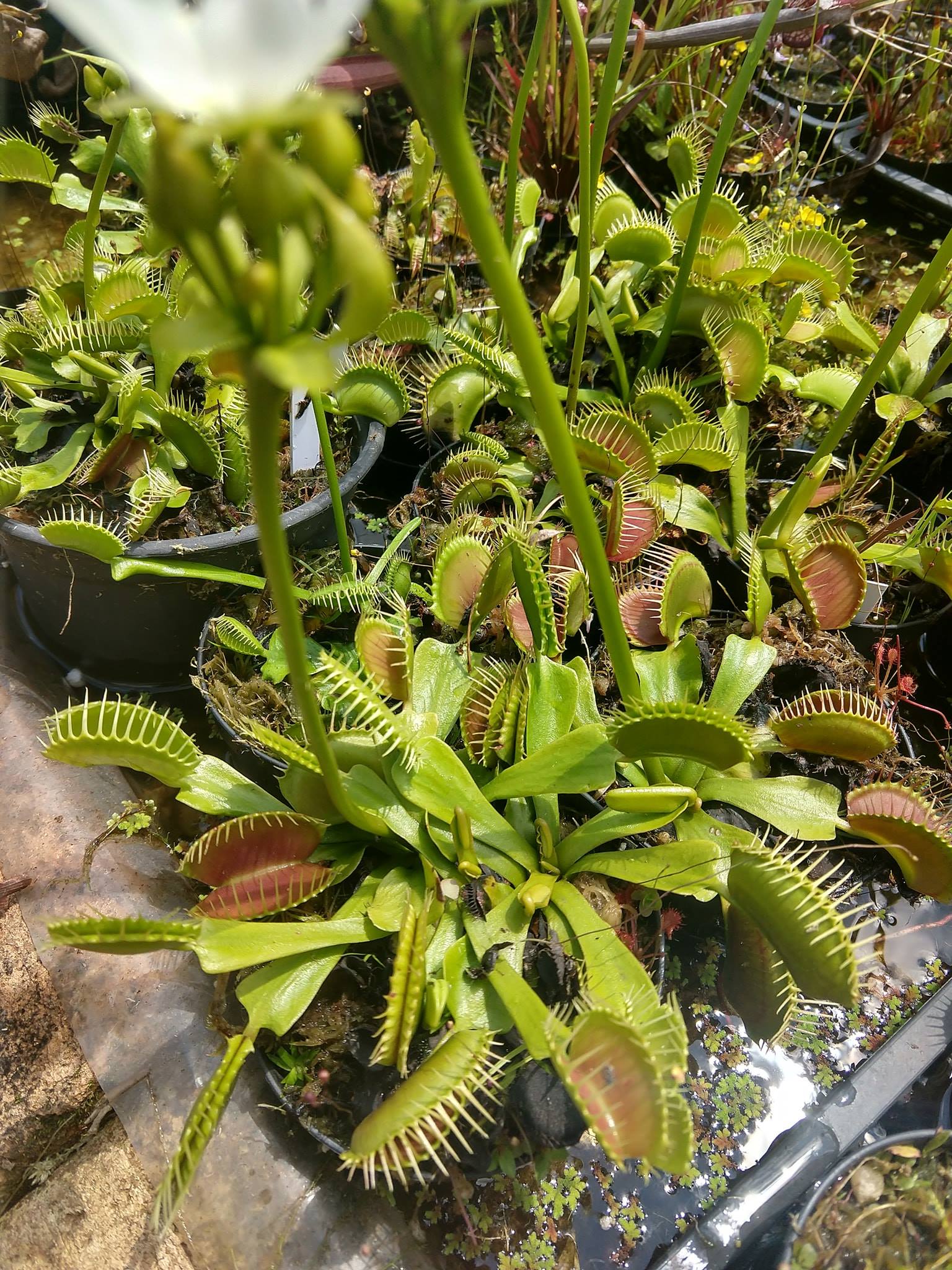From Our Nursery to Your Collection: How We Grow Your Plants
Welcome to Carnivorous Plants.com! We eat, sleep, and dream about carnivorous plants. We love what we do.
CarnivorousPlants.com is world’s largest seller of carnivorous plants by volume. Read more about us here! This is part 1 of a 2-part series that explains how we grow and ship your plants. Be sure to also read part 2, which explains how we ship your plants.
Here at our family’s nursery in Wilmington, North Carolina — the native range of the Venus flytrap, I stock anywhere between 100-200k Venus flytraps, pitcher plants, sundews, and other carnivorous plants at any given point in time. If you’re considering purchasing a Venus flytrap or other type of carnivorous plant, you’re in for a real treat. Let me bring you behind the scenes so I can show you how we grow our plants and ship them to you — our wonderful customers!
Indoor Hardening For Plantlets: 1-5 Months
Preparing the Substrate and Growing Medium
A solid growing setup always begins with choice of substrate. We use dried sphagnum moss as the primary substrate for all of our Venus flytraps and carnivorous plants. Sphagnum is an ideal substrate for a few reasons: it is low in minerals, maintains constant water absorption, and is porous, which enables air to circulate around roots. At carnivorousplants.com, we primarily use long-fibered New Zealand sphagnum moss, but also use Chilean and Peruvian sphagnum when the New Zealand variety is in short supply.
We grow our plantlets in 5″ and 6″ mesh pots in trays of pure RO water. All carnivorous plants, and particularly Venus flytraps require abundant pure water in order to thrive. Before we can use it for planting, each piece of fresh sphagnum moss is presoaked and fully saturated in pure RO water–from the same source we use to fill our water trays the pots stand in during the grow out phase.
Staging the Plantlets in their Controlled Indoor Growing Environment
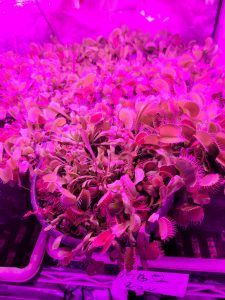
Our young plants — all from tissue culture, are grown in a large indoor grow tent. They reside here for several weeks up to many months. We use red and blue 28W LED grow lights. Our timer is set to 16 hrs of light per day, and as little as 11 depending on weather. 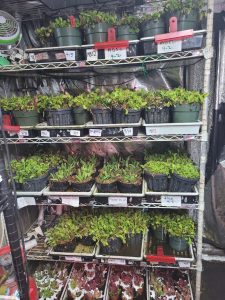
A tremendous advantage our Venus flytrap stock has is that our younger plants do not yet have awareness of the time of the year. Since they have recently emerged from tissue culture, they are NOT dormant during winter time, which allows us to ship live impressive plants during winter months. We use a CO2 canister for faster and sturdier growth– allowing our plants to be more hardened off than plants grown in traditional greenhouses. High humidity is not a hard requirement, but it does allow plants to grow faster. Our combination of temperature, humidity, CO2, and pure RO water is a magic formula that allows our plants to harden and thrive.
Outdoor Grow-Out, Additional Hardening: 2-12 Months
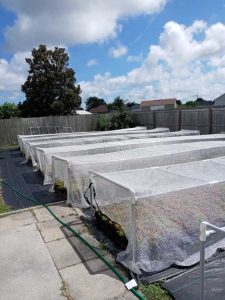
When our plants graduate from our intense indoor regimen, they are ready for the next phase of their lives: outdoor growing. During spring, summer, and autumn months, young plantlets are exposed to full sun with 30% reflective shade cloth from anywhere between 2-12 months depending on the season. 30% reflective shade cloth. Light goes through it and it diffuses, which allows for an even distribution of light. On overcast days, we remove the cloth in order to allow the plants to photosynthesize more — resulting in more colorful and sturdier plants. It’s important to note that our results are not achievable with a traditional greenhouse setup. Due to the opaque nature of white-painted greenhouse glass, plants are not able to photosynthesize as effectively as they are outdoors. Our shade cloth setup is more maintenance intensive and expensive, but the results are worth it.
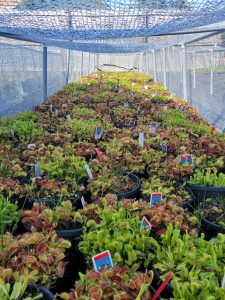
Winter Season Transition: 1 Month
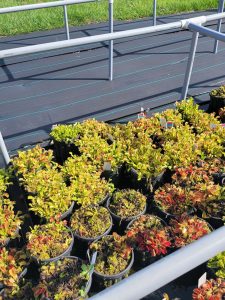
It’s important to note that during the winter months, we never ship outdoor plants that are undergoing their cooling period. During these months, we only ship ready specimens from our indoor facility that have been hardened off without seasonal awareness. This means that when customers receive the plants, they will have traps, leaves, and be ready to enjoy from day 1. Special care will need to be provided to plants shipped during winter. We have detailed instructions specifically for winter growing that accompany each plant we sell. At our nursery, we ship plants all 12 months of the year regardless of the weather. In order to ensure our plants’ smooth journey to your home, our shipping containers always include ice packs when necessary during summer months, and heat packs during winter months.
Ready to Ship to Your Home or Business!
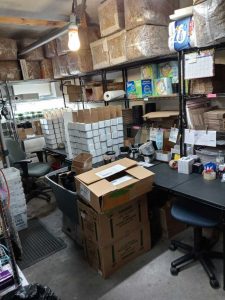
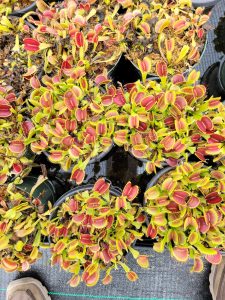
During our spring and summer months, mature plants are taken from our outdoor growing space and prepared for shipping. The mature plant pots you see in the photo contain anywhere between 6-15 adult plants. We use this inventory to fulfill our Mature and Adult Specimen orders. Each plant we sell includes its own plant kit that ships with a generously-portioned moss plug to retain moisture during transit. Additionally included in this kit is our 3″ professional grower’s-grade porous plastic pot and enough top-quality long-fiber moss to completely fill it– the exact same kind we use at our nursery for a seamless transition to your collection. Planting and detailed care instructions will also be included for a complete growing experience.
This concludes part 1 of a 2-part series that explains how we grow and ship your plants. Be sure to also read part 2, which explains how we ship your plants.

